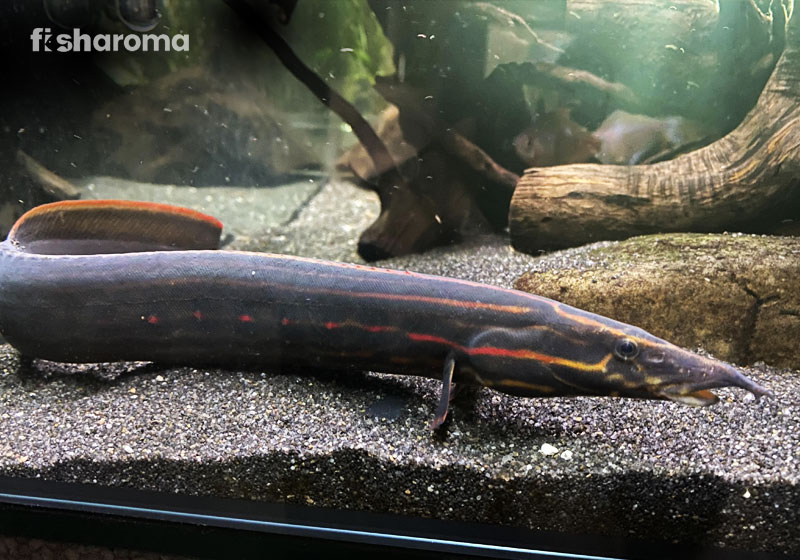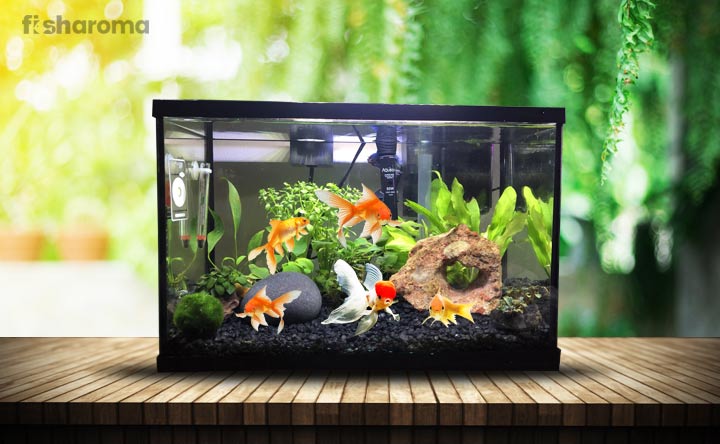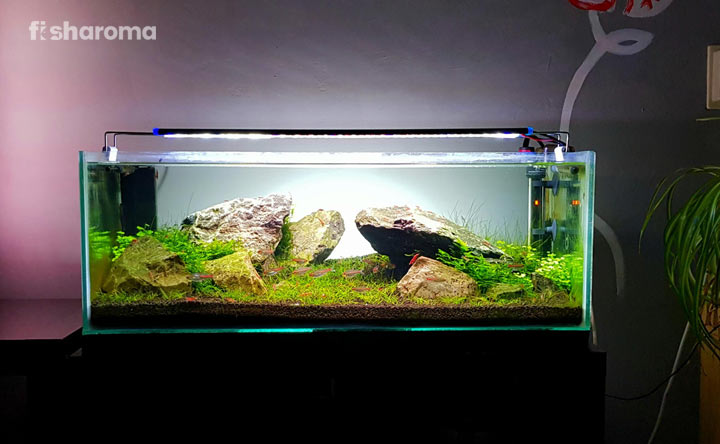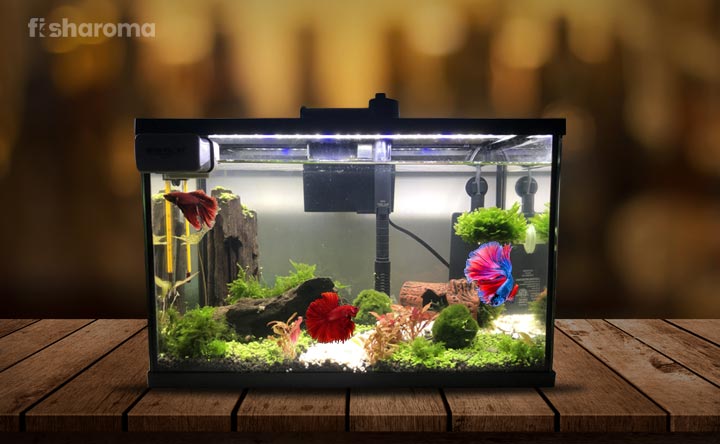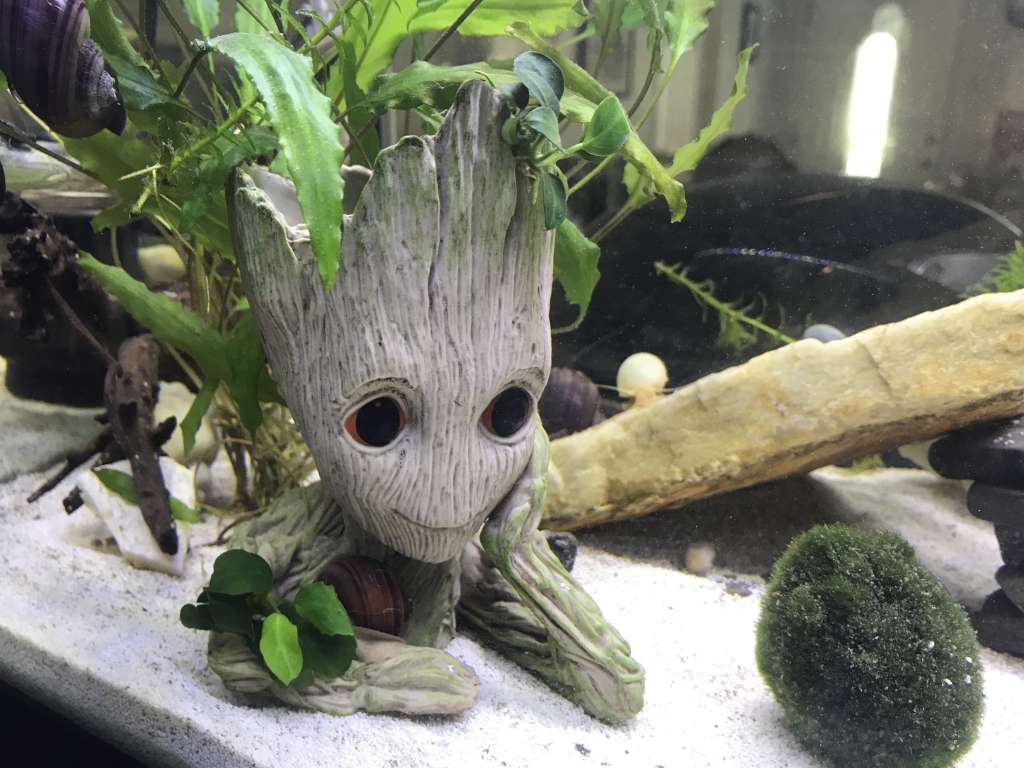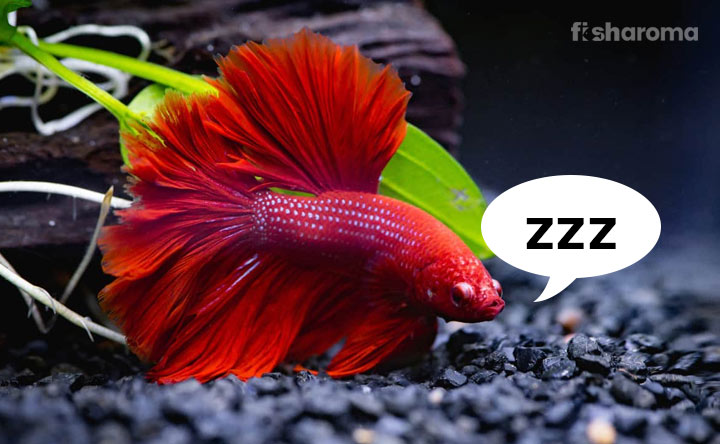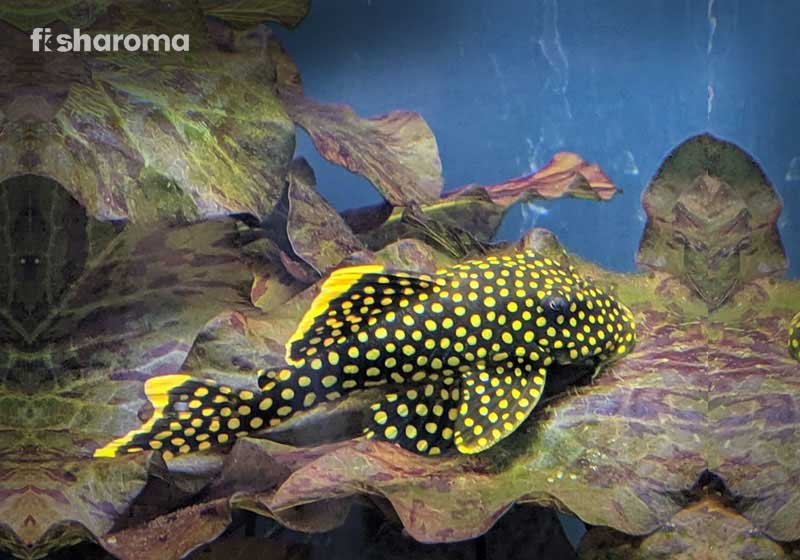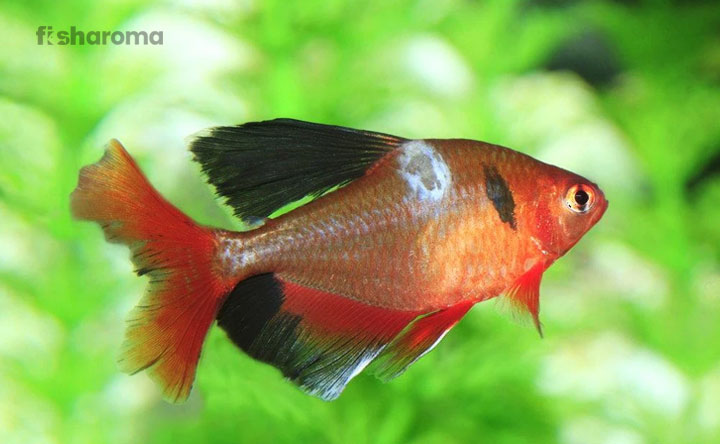What Do Fish Eat: The Healthiest Foods for Your Pet Fish
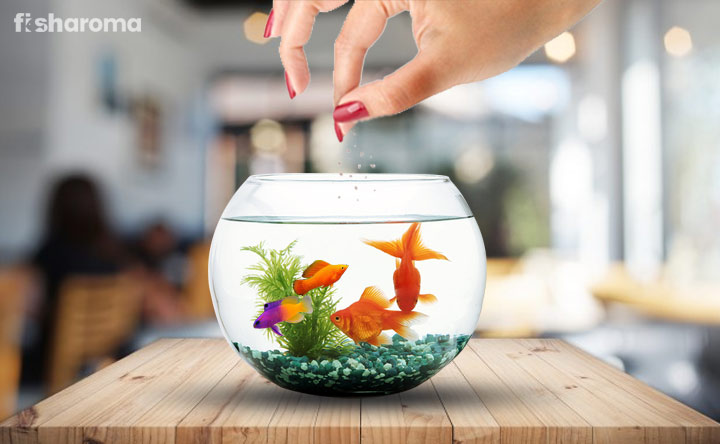
- Categorization Based on Dietary Habits of Fish
- Herbivorous Fish
- What Does Herbivorous Fish Eat?
- Carnivorous Fish
- What Does Carnivorous Fish Eat?
- Omnivorous Fish
- What Does Omnivorous Fish Eat?
- How Much Should You Feed Your Fish?
- How Many Times You Should Feed Your Fish?
- Consequences of overfeeding
- End notes
Being a fish keeper is never an easy endeavor! You’ll face many difficulties while taking care of your water buddies. And choosing the right foods for your fish is probably one of the critical difficulties you face more often.
People will suggest different foods for your fish, but you must know that all the fish cannot intake everything. Being the owner of the fish, it becomes your responsibility to know the staple diet of your fish and give it a healthy life onwards. It is truly a confusing task, but we are here to assist you to select the right food for your fish. Go through the article to know what do fish eat and avoid common mistakes.
Categorization Based on Dietary Habits of Fish
There are three categories according to the food preferences of aquarium fish, know the ideal food for the fish of these categories:
Herbivorous Fish
Herbivorous fish is fed mainly on the algae that grow inside the aquarium, and they keep the aquarium fresh. Additionally, they also eat foods like flakes and dry seaweed.
Herbivorous Fish for Aquarium
Following are the most popular herbivorous fish for aquarium
- Blennies: It is the small fish that will keep eating and jumping in the aquarium throughout the day.
- Regal Blue Tang: It is tiny, but a bit aggressive fish is a bit difficult to manage in your aquarium.
- Pleco: It comes in different and attractive colors, and they are considered as the most peaceful fish. Its friendly nature is the reason for keeping in the aquarium.
- Rainbow Parrotfish: This is probably the most attractive herbivorous fish for its color and structure for aquarium. You will need an adequate place to keep this in your aquarium.
What Does Herbivorous Fish Eat?
While herbivorous fish mainly intakes the algae and green veggies, you can give flakes to these fish too, which generally contains essential nutrition they need. It is observed that they are ‘always hungry,’ and they need food frequently. In order to feed them, along with algae and vegetables, you need to add fruits in their daily diet. Know the different types of foods they can be fed:
Dry Food and Dry Algae
If you are keeping herbivorous fish, you have to feed the mixture of dry plants and algae which are easily available in the stores. These are processed foods that can be preserved for longer periods. The most popular items of this food category are
- Dry Seaweed
- Nori Seaweed
- Ocean Nutrition Algae Seaweed Fish Food
- Hikari Seaweed Extreme Marine
- Tropical flakes with algae and others
Fresh Fruits and Plants
Herbivorous fish will eat the algae that grow in your tank, that’s why make sure there is no shortage of algae. But some algae are good for nothing, so the fish may not have essential nutrition. To fill up this gap, you can include different vegetables like
- Pea
- Bean
- Zucchini
- Lettuce
- Spinach and so on…
These veggies are the primary meal for them. Along with the veggies, sometimes, small cubes of fruits like Cucumbers, Apple, and Pears appear to be a good choice.
Flakes
Flakes are an ideal food for all types of fish as flakes contain almost all nutrients which help a fish to grow healthy. A large variety of flakes are available for these herbivorous fish in the market, such as
- Algae wafers
- Veggie pellet
- Taiyo Spirulina Flakes
- Ocean Nutrition Formula Two Flakes
- Flora Flakes Fish Food
- Granules
Nutrients Found in These Foods
Fruits and vegetables are the sources of multiple vitamins in fish especially vitamin A, C, and K. These will keep the fish healthy throughout the day. The mixture of dry food and algae supplies essential minerals and fibers. Frozen foods that you feed will provide essential nutrients like vitamin B1 and some essential minerals which keep your fish playful. The herbivorous fish get something to eat within the aquarium as they eat the algae mostly. But, some algae just fill the stomach, that’s why, to promote better health, foods from outside are required.
Carnivorous Fish
They eat worms and other live foods (both normal and frozen). Also, they love to pray to get the food, and they are always busy in playful activities as they are more energized than the herbivorous fish by consuming carbs and protein. They mainly consume insects, worms, small fish, and shrimps.
Carnivorous Fish for Aquarium
Following are the commonest carnivorous fish for aquarium use
- Bettas: It is considered as an aggressive fish for an aquarium, and they are also known as Siamese fighting fish.
- Tetras: It is the small fish suitable for freshwater aquarium.
- Arowanas: Arowanas are famous for their looks and bright and heavy scales. Your freshwater aquarium is simply incomplete without this one.
- Killifish: This tiny water buddy will enhance the elegance of your aquarium with its aggressive nature and beautiful look.
- Cichlids: Different species of this tropical fish are available for aquarium, and these are too aggressive in nature.
What Does Carnivorous Fish Eat?
They eat the foods that contain protein at a high rate, so, you can give dry food, frozen food, flakes, live food, and fresh food to them. Take a look below for more details.
Fresh and Live Foods
All sorts of live insects which fish intakes can be mentioned here. For the hardcore carnivores in your aquarium, you have to opt for live foods because they mainly depend on these for growth and health. Also remember, you can supply the required nutrients, essential protein and minerals to the fish at a low cost by using these fresh and live foods. The main foods in this category are:
- Brine Shrimps
- Daphnia
- White Worms
- Bloodworms
- Tubifex Worms
- Black Worms
- Feeder Fish
- Larvae
If you want to see visible growth in your fish, you have to feed them live foods but make sure there is no parasite which can cause health problem or even death to the fish.
Flakes
It is the commonest fish food, and it is also considered as the staple diet for any carnivorous aquarium fish. Unlike the flakes of herbivorous fish, flakes for the carnivorous fish are available in different variants containing shrimp or squid or worms. The price range of flakes varies greatly due to this variety. The most widely sold flakes for carnivorous fish are
- Squid flakes
- Omega One Super Color Flakes
- Tropical Mix Flake
- Ocean Nutrition Brine Shrimp Plus Flakes
- Shrimp formula
- Ocean Nutrition Food Primereef Flake
- Tropical Flakes With Earthworm Protein
Dry Food
Dry food really works for better health for your aquarium fish, so if you are planning to skip this, please think twice. Dry food or specifically the dry fish and dry worms are the most popular ones of this segment because these are easily available in the stores near you as well as in the online stores. The most popular products of this segment are
- Dry Fish, Everfresh Pro Aqua Probiotics
- Dry Bloodworms
- Shrimp-E Natural Live Aquarium Fish Food
- Dry White Worms
- Dry Brine Shrimp
Frozen Dry Foods
Sometimes, you need to freeze the dry foods to preserve the nutrients in them. You will need to preserve the high-quality dry fish or worms in this way. These are one of the best-processed foods which you can store for a long period to feed the carnivorous fish. Also, you will get these in any pet shop or the online stores. Some of these foods include
- Toya Shrimp Fish Food
- Frozen Dry Black Worm
- Frozen Dry Blood Worms
- Blood Worm Freeze meal
- Freeze Dried Shrimp Fish Food
- Aquarium Tropical Krill Freeze Dried Bulk
- Freeze Dried Micro Worm Meal
Frozen Foods
The main foods of this category are
- Frozen Shrimp
- Northfin Fish Food Carnivore Formula
- Frozen Worms
- Frozen Fish
These foods contain simple but essential nutrients that ordinary flakes or dry foods cannot offer, and thereby, these foods provide high energy to the fish.
Nutrients Found In These Foods
The diet of carnivorous fish needs to have 45% to 70% of the protein that directly comes from live foods or to be more specific, the protein comes from insects they intake. The fresh and live food will supply the essential vitamins, minerals, fibers to the fish which will keep it healthy and playful. Your aquarium fish will find vitamin B1, Vitamin B3, and C from the dry and frozen foods for overall healthy growth.
Vitamin B1 and carb are the sources of energy of the fish which it will obtain from flakes and live foods. It is known to all that ideal food must have a proportionate combination of Carbohydrates, Protein, Fat, Vitamins, Minerals, and Fibers. A balanced diet of flakes, dry food, frozen dry food, and live food on alternate days will be able to supply all these to your fish.
Omnivorous Fish
Aquarium fish of this category eat almost everything. They love to consume fleshy things as well as plants.
Omnivorous Fish for Aquarium
Most of the keepers prefer the fish of this category due to the huge variety of food choices are available. They intake everything and digest the foods too. Following are some popular omnivorous fish:
- Goldfish: Goldfish are suitable for the small fishbowls and large aquariums, and it is easy to maintain fir its size.
- Red Tail Shark: It is the least demanding fish for your freshwater tank and less aggressive than other omnivorous fish.
- Catfish: It is an eye catchy fish, and its looks will give your aquarium a classy touch. It is easy to look after this peaceful species with moderate temperature in the aquarium throughout.
- Zebra Danio: It is a freshwater fish that is friendly with others. It does not grow too large, and therefore, it is easy to keep.
- Molly Fish: It is suitable for saltwater aquariums, and it is an easy-going fish that can adjust in a small aquarium with others.
What Does Omnivorous Fish Eat?
Omnivorous aquarium fish depends on both on the algae that grow in the aquarium as well as on food supplied from outside. It intakes almost all types of food provided from the outside like flakes, granules, pellets, shrimps, small fish, worms, insects, larvae, and dry foods. Know the types of food for omnivores:
Flakes
For the flakes of omnivores, you can use the flakes used for the herbivorous and the carnivorous fish made with algae, shrimp, squid, bloodworms which can supply adequate nutrition to your aquarium friend. Some of the popular variants of these omnivores are difficult to get, but most of them are available in your nearest pet shop. Some of these are
- Algae wafers
- Spirulina flake
- Growth Shrimp
- Complete Fish Food
- Ocean Nutrition Brine Shrimp Plus Flakes
- Flora Flakes Fish Food
- Omega One Super Color Flakes
- Optimum Fish Food
Dry Food
Here you can select the dry leaves and algae mixture which was mentioned for the herbivorous fish, as well as dry worms mentioned for carnivores. The dry foods are important because these contain low fat, and it is safer than other foods. Some popular foods of this section are
- Dry plants and algae
- Dry White Worms
- Brine Shrimp Plus Flakes
- Bloodworms
- Dry Tubifex Worms
Frozen Dry Food
Frozen dry packages of foods are considered to be one of the most favorite foods for these omnivores. However, frozen dry food is costlier the other options, and some fish keepers skip this. But these frozen dry foods contain high protein, so if you want your aquarium buddy to be healthy, you can give this at least once a week. Some foods of this genre are
- Freeze Dried Brine Shrimps
- Freeze-Dried Plankton
Frozen Food
For the omnivores, you can feed the same frozen foods which are recommended for the carnivores. Like
- Frozen Shrimp
- Crispy Frozen Worms
- Frozen Fish.
Along with these, you can add Frozen Spirulina, Frozen Plankton, and Frozen Krill to see your fish livelier.
Fresh Fruits and Veggies
In this category, you can feed the vegetables which are high in nutrients and vitamins. Fruits like apple will be alright for omnivorous fish at the grown-up stage. Along with that, the most recommended vegetables are:
- Peas
- Green beans
- Spinach, Lettuce
- Zucchini
Live Foods
Omnivorous fish share almost the same eating habit when it comes to live foods with the carnivorous ones. They consume
- Daphnia
- Brine Shrimps
- White worms
- Tubifex Worms
- Feeder fish,
- Mosquito Larvae.
Cooked Foods
For this option, you need to consult an expert, and as per the diet chart is given by the expert, you can cook food for your fish. Well, you can’t cook anything after searching on the internet for your fish. Take proper guidance from the experts.
Nutrients Found in These Foods
Fruits will supply the nutrients and fibers which will make the fish strong and immune. Fish is normally found stressed during the initial days, and these fresh foods will reduce stress and promote the wellbeing of the fish. These fresh foods are the source of all the vitamins and minerals in your aquarium buddies. All the dry foods are very rich in protein but containing low fat which will protect them from putting on weight.
It is preferred not to give any meat or to be more specific animal protein to the fish as these contain too much fat, and it will make them obese.
Why Variations are important in Fish Food?
It is recommended that you need to add some variations in the diet of your fish but it is itself very confusing because we often don’t understand what to feed the fish except the flakes. Also, the question is why we need varieties in fish food?
In simpler words, your fish is just like you, and you definitely don’t prefer that same boring meal every day! So are your fish! Sounds weird? Well, it’s maybe weird, but it’s a fact. You can see visible changes in the activities of your aquarium fish once you add the variation in their meals. It is acceptable if you are feeding flakes twice or thrice a week, but feeding flakes every day is not a smart idea.
Now, you know the different types of food for different types of aquarium fish. Now the next important things are quantity and frequency of feeding.
How Much Should You Feed Your Fish?
Based on the rule of thumb, it can be recommended to give a specific quantity of food to the fish which the fish can finish eating in 5 minutes. You will learn this gradually within 3 to 5 days. Initially, you can give a small quantity of food and observe the time taken to finish that and adjust the quantity on the next day.
Remember, the size of fish and the health of the fish are the determiner of the quantity of fish food. All you need do is to spread the food evenly on the aquarium. Also remember, if you feel you have overfed the fish, you can underfeed the fish as well on the next day.
How Many Times You Should Feed Your Fish?
One meal a day will work well for the aquarium fish. However, if you still want to feed them twice or thrice, make sure the quantity of food is very small. It really does not matter how many times you feed the fish, but the quantity of food really matters. The timing of food has to be the same every day. Be particular about that.
You have to feed the herbivorous fish over and again because they are always hungry since they don’t have a large stomach to hold adequate food at a time. But the quantity will be the same for them.
Fish keepers, having the nocturnal feeders like the Catfish, will have to feed the fish before switching off the lights.
For the newly hatched fries, you may have to feed frequently.
Consequences of overfeeding
Overfeeding the will harm the fish and water
Consequences for fish health
- Due to overfeeding, fish health will be poor, and they will be stressed.
- Your fish will be obese.
- Their fins will have the tendency to rot.
- A possibility of a fatty liver.
- Fish will have worms.
- Fish will excrete more.
Keep it in mind that fish generally eat whatever you feed them even if they are full as they are not aware of overeating. If your fish is not eating the food, be sure that there is something wrong with the fish.
That’s about the fish. Now let’s talk about the consequences of overfeeding in terms of the aquarium and the water!
Consequences for water
- Oxygen level will be reduced due to overfeeding.
- The filters will be clogged due to excess food particles.
- The level of ammonia will gradually increase, which will result in nitrite and then in nitrate. The nitrates formed by the remaining food particles will promote algae growth and that too at a rapid rate.
- The pH level will fall, and aquarium water will lead towards acidic.
- Excess food may break down and react after coming contact with water which can contaminate the water.
It means that you are unintentionally polluting the tank by overfeeding the fish and you will not understand any of these changes without water testing. Moreover, if the excess food or the fish excrete are not cleaned on time, these will get stuck to the bottom of the aquarium and make it dirty and a living hell for your little water buddies.
- Clean the uneaten foods.
- Clean the fish wastes twice or at least once a week.
- Use fishnets or go for manual cleaning to take out the dirt.
End notes
Now, you have the idea of what do fish eat and the available food options. Also, you know the quantity of food and frequency of feeding. Still, if you ever feel that you are facing difficulties to feed the fish or you want to change its diet, you can consult an expert. If you are feeding only the flakes, don’t switch to other food immediately.
The best way to switch food is to give alternative food once or twice a week and increase that gradually. It will help the fish adapt to the changes. The healthy growth of the fish depends much on their nutrition, so, you must know the food preferences, eating habits, and everything else at the time of buying the fish.
Enhance Your Knowledge of Fishkeeping
If you want healthy fish in your aquarium, you have to go through these guides.
- Dietary Habits Of Crayfish: Need a change in your aquarium? Keep Crayfish, we are here to guide you about their diet.
- Stepwise Aquarium Setup: Go through the steps to set up a healthy tank for your pet fish.
- Causes and Cures of the Common Algae in Aquarium: Know the causes and cures of 11 types of algae and promote better health of your pet fish.

